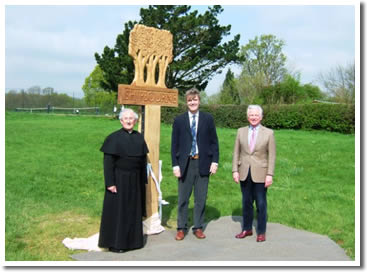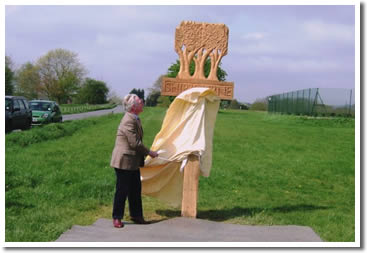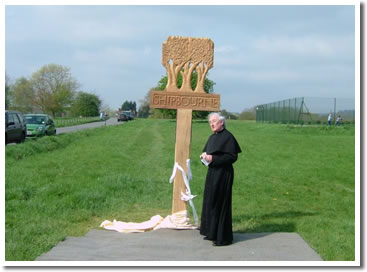|
Shipbourne Village Sign On Saturday 18th April 2009, with the spring sunshine breaking through the clouds, a splendid turn-out from the village witnessed the unveiling of the new Shipbourne Village Sign. After the introduction and welcome by the Chairman of the parish council Martin Miles, Mr James Swartz, Chairman of The Fairlawne Estate Company, spoke warmly to the ensemble prior to revealing the carved oak sign depicting pollarded Hornbeams – a feature of the local Shipbourne landscape. The Rev Peter Flynn then blessed the sign and at the conclusion of the ceremony all moved the short distance to the Village Hall where tea, coffee and cakes were served. With thanks to the parish council and in particular to Libby Cohen, Lynette Sargent and James Sheldrick whose input literally enabled this new Shipbourne landmark to ‘get off the ground’, and of course to The Fairlawne Estate and the private benefactors for their generous assistance.
|
|
  |
  |
|
Ancient Hornbeams commemorated on the Shipbourne Village Sign The wildwoods of England vanished centuries ago but Kent is still amongst the most wooded counties in England. Traditionally, this part of Kent – the Western Low Weald – was covered in oak-hornbeam woods (which are particularly suited to our heavy clay soil) and small coppice woodlands. Venerable, ancient trees are as much part of our heritage as the old manor houses and stately homes we treasure. An oak or yew tree starts to become of interest when it is perhaps 500 years old: they could live to over 1000. But a beech or hornbeam (the same family) have a shorter life-span: a 200 year old tree is beginning to be interesting and may well live for another 200 years or more. In Blean Woods, not so very far from here, there are coppiced beech thought to be over 700 years old. Historically, hornbeams were used locally to mark parish boundaries – Shipbourne was in the Hundreds of Wrotham. When the bounds of Shipbourne were recorded in 1802, sections of hornbeams were found on the southern boundary, ‘…from Hookwood along the Old Park Ditch to Riding Lane…’. Pollarding oak and hornbeam was a traditional form of woodland management since medieval times, when the trees were regularly lopped (pollarded) in late winter or early spring to above the height of grazing cattle. The leaves and twigs were used as fodder for sheep and cattle and the branches saved for firewood. And in the open landscape large single trees were often pollarded too, on a regular cycle, to create an annual supply of fire wood. Today, if you walk along the southern boundary of the parish either east along the footpath from Hookwood towards the plant nursery on Hamptons Road, or west from Hookwood and Dene Park towards Back Lane and the A227 you will still see these lines of ancient hornbeams. They are a very distinctive landscape feature which help give Shipbourne a special character, a regional identity and sense of place. Traditionally livestock would have grazed between these scattered groups of trees and pollards in open grassy areas creating wood-pasture. Examples of this type of historic park can be seen at Knole and Lullingstone Parks. And these hornbeam are not only a feature of our parish boundary but also demonstrate the work and life style of our ancestors. Since the ninth century dens – locally Puttenden, Hildenborough, Hayesden – were used for grazing swine. The pigs were driven along the drove roads to fatten up on the acorns and beech in the woods at the dens: such woods that pre-date 1600 are now termed ancient woodland. Funds for a Shipbourne Village Sign have long been earmarked but the generosity of two local benefactors meant that this year the sign became a reality. Pollarded hornbeam were selected as the design inspiration for it and the artist and sculptor, Martin Brockman, was chosen. The village sign was struck by lightning in July 2018 and was badly damaged. The sign had to be removed to be repaired. Following restoration by Fitzpatrick Woolmer, the sign was re-instated at the beginning of 2019. Above courtesy of Libby Cohen |
|